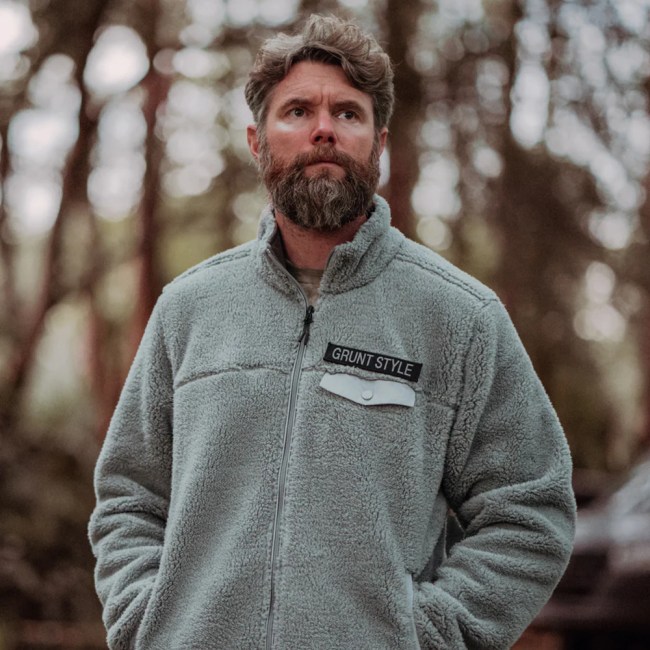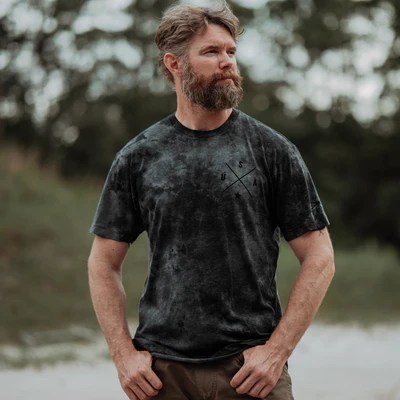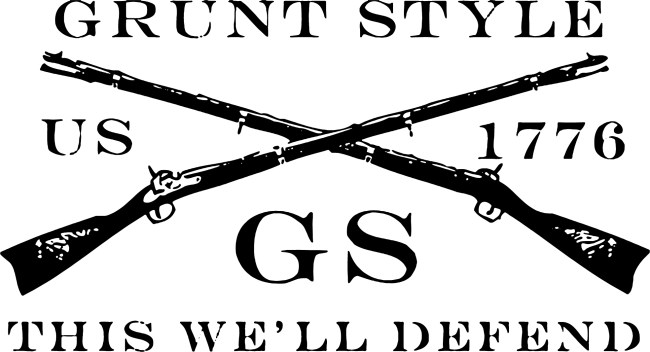
“‘I trained at BUD/S and served with SEAL Team Ten,’ shares Rich Graham, his voice echoing the depths of his journey as a Navy SEAL.
When a small pox vaccine mishap triggered a blood clot and called his SEAL career into question, he didn’t just survive; he navigated into uncharted waters with unwavering resolve.
“The small pox double dose was in a rush to get me deployed, more so than an accident,” Rich explains. “They didn’t have time, as there is a separation in time for the booster. They just did both at the same time.”
After his Navy career ended abruptly, Rich founded Full Spectrum Warriors™, which specializes in a holistic training approach that merges firearms expertise, combat tactics, and physical conditioning to build a comprehensive warrior ethos. “It’s about adopting a warrior mindset for the daily grind,” Rich emphasizes. This philosophy centers on tactical skill and self-defense for individuals and organizations, while cultivating the mental toughness and resilience essential for overcoming life’s challenges with confidence. Full Spectrum Warrior isn’t merely about marksmanship—it’s a comprehensive shaping of the warrior, where tactical skill aligns with endurance, nutrition, and mental fortitude.
Rich Graham doesn’t just represent Grunt Style as a brand influencer; he lives it, breathes it, and brings it to life for others.
We sat down with Rich to unpack his storied military service and how he’s redefining readiness, starting with the mind—guiding police departments and other organizations towards peak performance and their best selves with the power of mindset.
SHOP RICH’S GRUNT STYLE COLLECTION
To start off, could you tell us a bit about yourself, your service, and what you do currently?
Sure. I joined the Navy at 18 and was in boot camp when I turned 19. I trained at BUD/S (Basic Underwater Demolition/SEAL) and served with SEAL Team Ten, doing two tours. I served as a sniper and held various roles on the team. During my second deployment, I had a health scare—I developed a major blood clot in my brachial vein after receiving a double dosage of the smallpox vaccine by accident. Despite multiple attempts, the clot couldn’t be treated successfully, and it ended my Navy career since I could no longer pass the physicals for diving and jumping, which are essential for a SEAL.
Have you managed to sort out your disability benefits?
It’s a work in progress. At 25, when I left the military, I didn’t pursue a medical discharge properly. I was worried it would affect my chances of being hired by private military contractors. Nobody explained how the system worked, so I was honorably discharged without any disability claim. Now, I’m trying to rectify that, which is a more challenging process.
What did you do after leaving the military?
I returned to my hometown in New Jersey, started personal training at a gym, and worked at a martial arts studio. Through Thai boxing, I met SWAT officers who invited me to their sniper school. I ended up teaching tactical pistol courses for police departments from various states.
Why were you so willing to say yes to teaching?
I felt I could really contribute. With my background in personal training and martial arts, I was skilled at communicating complex movements in simpler terms. The officers often told me they’d never had it explained in such a straightforward way. As I got involved, I realized the police training wasn’t as advanced as I expected, so I volunteered my expertise.
How did you transition into your current role from there?
I recognized that firearms training was my niche. Although I was a competent trainer in other fields, firearms training was where I could excel. Around 2014, I committed to firearms training full-time, turning it into a viable business venture, which quickly gained traction
What’s the most significant feedback you’ve received from your training programs?
The feedback has consistently been positive about my ability to simplify complex tactics into manageable, easy-to-understand concepts. It’s about structuring the training in layers, allowing for easy comprehension, replication, and application. This methodical approach seems to resonate well with both law enforcement and civilians.
It sounds like you’ve found a meaningful way to continue serving after your military career.
Absolutely. It’s about adapting what I know from the SEAL teams to fit the different contexts that civilians and law enforcement encounter. Tailoring the skills and strategies to their needs has been both a challenge and a reward in my post-military career.
Rich, with all you’re doing now, what veteran causes are you passionate about advocating for?
I’ve been leading the Home Front K9 Project for about seven or eight years. We train service dogs for Special Forces families, and our aim is to integrate these dogs while the service members are still active. It’s like a preemptive strike, you know? We want to help with the transition before they’re out of service. Getting a vet to listen to how they’re messing up isn’t easy—they’ll just shut you down. But with the dogs, it’s different. We teach them clear, direct communication with no room for sarcasm or snark. It’s a reflection of how we should interact with our families too, fixing things before they fall apart. We’re also deeply involved in suicide prevention with Operation Restored Warrior and Mighty Oaks, focusing on spiritual healing through faith. I’ve been part of extreme sports fundraisers and a cross-country bike ride for the Special Operations Warrior Foundation, which was all about supporting the children of fallen soldiers with scholarships. It’s just… now we’re more focused on preventing veteran suicide, especially with how colleges can sometimes be… let’s just say, not on the same page as us.
That’s really inspiring. Let’s pivot to Grunt Style. Can you share your experience working with them as a creator?
Grunt Style’s been like family. Kelsey introduced me to you guys, and the team’s always gone the extra mile. When I got married, they sent over this amazing care package. They’ve supported events like our Protector Summit too. It’s cool to see students show up already wearing Grunt Style—it’s a big, like-minded community.
How about creating content for Grunt Style? How’s that been going?
It’s been easy. You send me so much gear that I end up posting way more than required. I’m always in it—whether I’m at the gym with those silkies you know I love, at the range, or just around town. We should sync up though, make sure what I’m creating fits with what Grunt Style wants to feature more of.

Have you ever been recognized for wearing Grunt Style gear?
All the time. It’s like a badge of honor, you know?
And your favorite piece of gear from them?
Definitely the silkies for the gym. But for everyday wear, it’s those flannels—great for carrying concealed. And I can’t get enough of those band-themed T-shirts, the patriotic spin-offs, they’re just fun.
Rich, throughout this interview, you’ve shared that you’re committed to continuing service. After leaving the military because your service was unexpectedly cut short, you’ve been seeking ways to keep serving. So, the final question is: Why do you still serve even though you no longer wear the uniform, and what motivates you?
Honestly, I’m driven by the desire to empower others. I believe our job is never really finished. For those of us with this kind of mindset, there’s always more that can be done. Our charity, Home Front K9 Project, uses the slogan “Born to Serve.” It refers to both the service dogs and the veterans or families they assist. Just as the dog serves, we serve our community. And for me, it’s now about serving God and my faith, which inspires me to empower others, not just focusing on myself but also on how we can uplift those around us.

You’ve spoken a lot about your work with police departments and Full Spectrum Warrior, but haven’t delved into details. Can you explain what Full Spectrum Warrior is, and what it consists of? It’s an important part of your story.
Sure. Full Spectrum Warrior began when I started working with police and firefighters. I realized that many were struggling with their weight—a lifestyle issue. People wanted to train like Navy SEALs, but I had to explain there’s more to it than just shooting well. Like a UFC fighter, they train technically, but also focus on strength, endurance, diet, and mental resilience. Full Spectrum Warrior embodies this well-rounded approach to life and success. Each aspect of life, represented by the swords in our symbol, needs to be developed to maintain success. It’s about adopting a warrior mindset for the daily grind. We mainly offer shooting schools, but there’s an emphasis on mindset and lifestyle as well.
SHOP RICH’S GRUNT STYLE COLLECTION
What feedback have you gotten from the mindset training?
The feedback has been really positive. We’ve helped people reach and maintain their goals. I’m writing a book titled “The Full Spectrum Warrior Lifestyle” to compile years of coaching into something that can reach even more people. It’s about recognizing and avoiding the small things that can derail us. People have told me how they now catch themselves before making mistakes, thanks to this mindset. It’s been rewarding to hear their stories.
This ties into what the Grunt Style Foundation is doing. Many veterans fear the transition out of the military, because they lose their sense of identity. What you’re doing, Rich, is helping them find a new sense of purpose and identity. The proof is in the pudding.
Absolutely, it’s about guiding them to find that new purpose and belonging, just as others have done for us.
